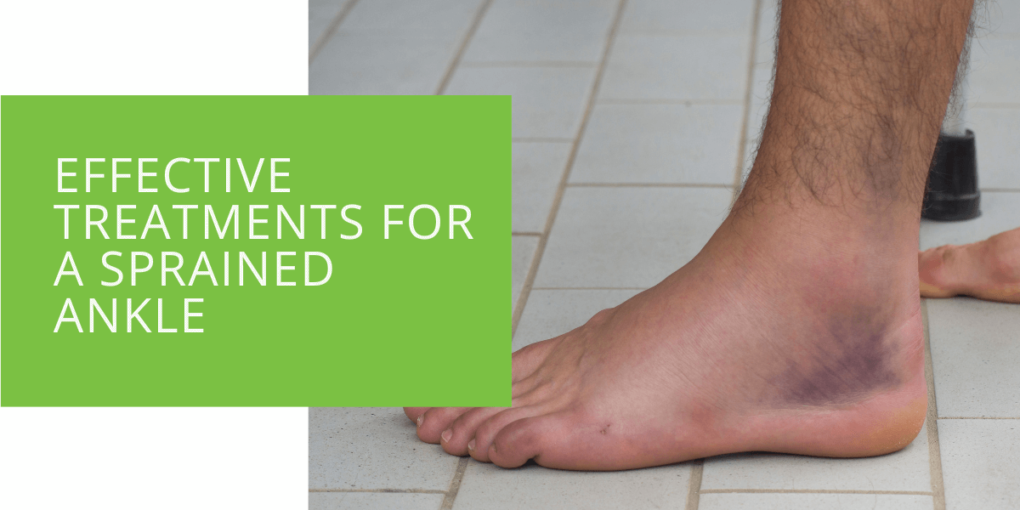Effective Treatments for a Sprained Ankle
Ankle sprains are a common injury, especially for those who are active in sports or have an active lifestyle. The ankle is made up of several ligaments that help to keep the ankle joint stable. It is known as a sprain when these ligaments are stretched or torn. Symptoms of a sprained ankle can include pain, swelling, and instability in the ankle joint.
This article will provide a comprehensive guide on the best treatments for a sprained ankle, including non-surgical and surgical options.
Rest, Ice, Compression, and Elevation (R.I.C.E)
The first line of treatment for a sprained ankle is the R.I.C.E method, which stands for rest, ice, compression, and elevation. This method reduces pain, swelling, and inflammation in the ankle joint.
- Rest: Resting the ankle is essential to allow the ligaments to heal and avoid further injury.
- Ice: Applying an ice pack to the affected area will help to reduce swelling and numb the area to reduce pain.
- Compression: Compression of the ankle using a bandage or compression sock can help reduce swelling and support the ankle.
- Elevation: Elevating the ankle above the heart level will help reduce swelling by encouraging blood flow away from the affected area.

Physical Therapy
Physical therapy is another effective treatment for a sprained ankle. A physical therapist can help to improve the range of motion and strength in the ankle joint, which can help to prevent future injuries.
Physical therapists can also teach exercises to help improve stability and balance in the ankle. It is important to start physical therapy as soon as possible after a sprain to help prevent chronic instability and weakness in the ankle joint.
Bracing and Taping
Bracing and taping of the ankle can help to provide support and reduce the risk of further injury. A brace or tape can help to immobilize the ankle and reduce the risk of further sprains. A brace or tape can also help to improve stability and balance in the ankle joint.
Medications
Medications such as over-the-counter ibuprofen can help to reduce pain and inflammation in the ankle joint. In some cases, a doctor may prescribe stronger pain medications or anti-inflammatory drugs to help manage pain and swelling.
Surgery
Surgery may sometimes be necessary to repair a severe sprain or tear in the ankle ligaments. Surgery is usually only considered if conservative treatments such as the R.I.C.E method, physical therapy, and bracing have failed to provide relief. Surgery may be necessary if the ankle is unstable or damages the ankle ligaments significantly.

How to Choose the Right Treatment
It is important to consult with a podiatrist or sports medicine doctor to help determine the best treatment for a sprained ankle. A podiatrist can help diagnose the sprain's severity and recommend the most appropriate treatment. In some cases, an x-ray may be necessary to rule out any bone fractures.
Prevention of Ankle Sprains
Ankle sprains can be debilitating and can take a long time to heal, so it's important to take steps to prevent them from occurring. Here are some tips to help prevent ankle sprains:
- Strengthening exercises: Strengthening the ankle joint muscles can help improve stability and reduce the risk of sprains. Some exercises that can help strengthen the ankle include calf raises, squats, and leg presses.
- Stretching exercises: Stretching the muscles around the ankle joint can help to improve flexibility and reduce the risk of sprains. Some stretches that can help stretch the ankle include ankle rotations and circles.
- Proper footwear: Wearing shoes that fit properly and offer good support can help to reduce the risk of sprains. This is especially important for those who are active in sports or have an active lifestyle.
- Avoiding uneven surfaces: Walking or running on uneven surfaces can increase the risk of sprains. Try to stick to flat, even surfaces whenever possible.
- Proper warm-up: Warming up before participating in sports or other physical activities can help to reduce the risk of sprains. This can include stretching, light cardio, and gradually increasing the intensity of the activity.
- Resting and avoiding overuse: Overusing the ankle joint can lead to sprains. It's important to rest and allow the ankle to recover if it is feeling fatigued or sore.
- Consult a specialist: If you have a history of ankle sprains or are at a higher risk of spraining your ankle, consult a specialist such as a podiatrist or sports medicine doctor who can help design a prevention plan tailored to your specific needs.
Following these tips can reduce your risk of ankle sprains and improve your overall ankle health. Remember, it is always better to prevent an injury than to have to treat one.
Conclusion
A sprained ankle is a common injury that can be effectively treated with the right approach. Consult with a podiatrist or sports medicine doctor to determine the best treatment for your injury and follow the recommended treatment plan to help prevent further injury. It's important to rest, ice, compress and elevate the ankle, and use physical therapy, bracing, medications, and surgery if necessary. Remember to address any underlying issues that may have contributed to the sprain to help prevent future injuries.

